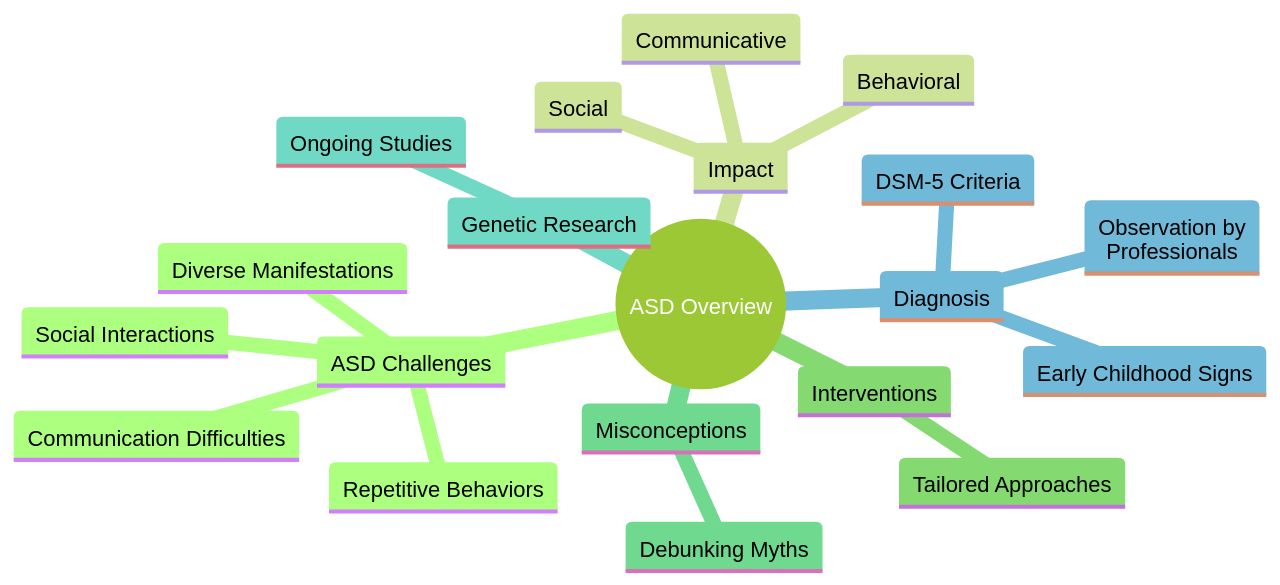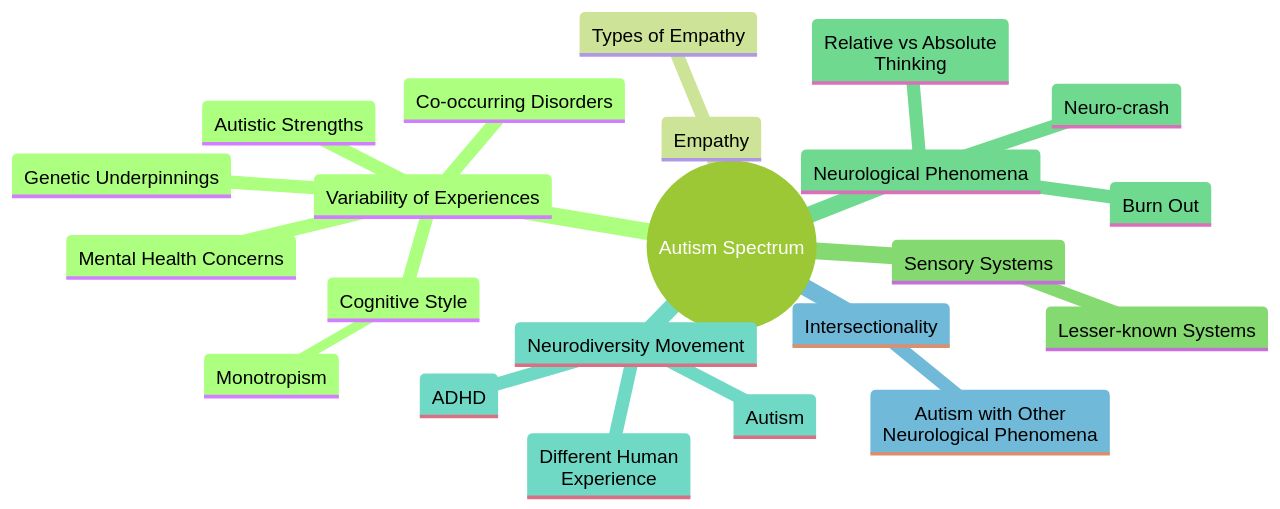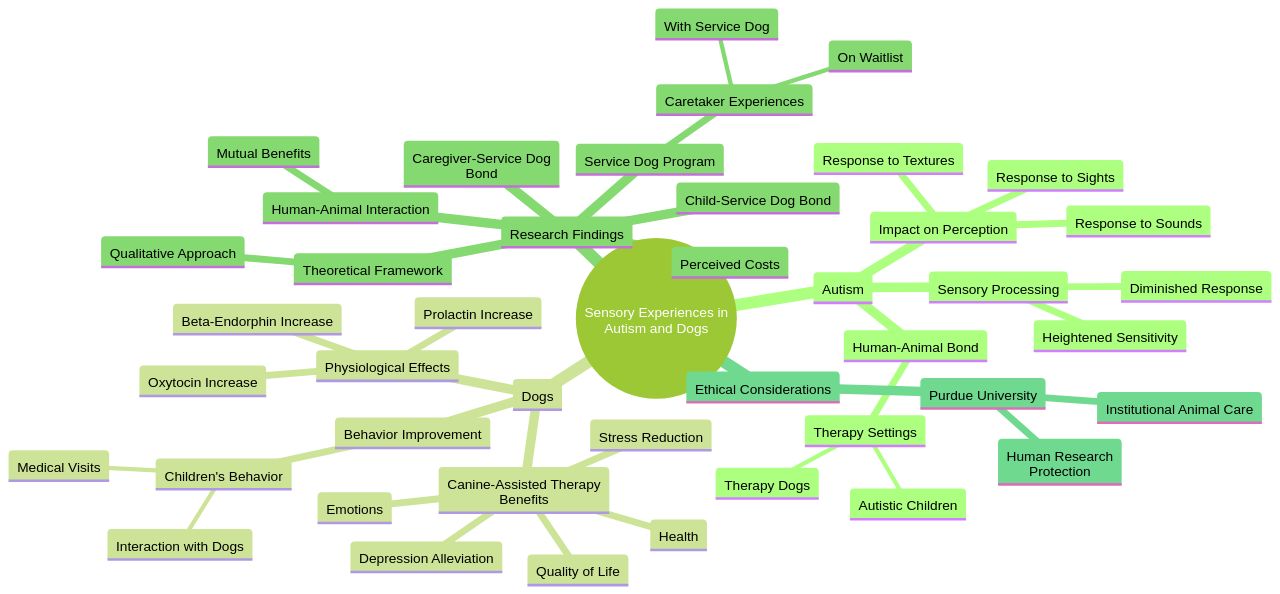Introduction
Understanding Autism Spectrum Disorder (ASD) is crucial as it affects social interaction, communication skills, and behavior with varying severity. Diagnosing ASD involves a team of professionals who assess the child through observations and information from family and educators.
Early detection and intervention are key, as they can significantly enhance a child's development. Programs often address communication, social skills, and behavior management, among others.
The prevalence of autism is increasing, with recent statistics showing that 1 in 36 children in the United States is now diagnosed with ASD. This rise underscores the importance of early and accurate diagnosis, which can lead to timely interventions and better outcomes for children with autism. Each individual's challenges and strengths within ASD are unique, necessitating personalized support to maximize their potential.
Defining Autism Spectrum Disorder (ASD)
Understanding Autism Spectrum Disorder (ASD) is crucial as it affects social interaction, communication skills, and behavior with varying severity. Diagnosing ASD involves a team of professionals, including pediatricians and therapists, who assess the child through observations and information from family and educators. Early detection and intervention are key, as they can significantly enhance a child's development.
Programs often address communication, social skills, and behavior management, among others. In Australia, the National Disability Insurance Scheme (NDIS) supports children with autism by providing personalized plans and funding for services. The DSM-5 offers standardized criteria for ASD diagnosis, emphasizing the need for diverse information sources for accurate assessment.
With the prevalence of autism increasing, recent statistics show that 1 in 36 children in the United States is now diagnosed with ASD, up from 1 in 150 two decades ago. This rise underscores the importance of early and accurate diagnosis, which can lead to timely interventions and better outcomes for children with autism. The diversity within ASD means that each individual's challenges and strengths are unique, necessitating personalized support to maximize their potential.
Prevalence and Trends in Autism Diagnosis
The landscape of Autism Spectrum Disorder (ASD) diagnosis is evolving, with a significant increase in the number of children identified with the condition. Research reveals that the prevalence of developmental disabilities, including ASD, has risen from 7.40% to 8.56% among children aged 3-17 years from 2019 to 2021.
This upward trend is attributed to a variety of factors, including heightened awareness and more sophisticated diagnostic criteria, rather than a rise in the condition itself. The National Health Interview Survey emphasizes the need for timely and adequate services for children with developmental disabilities, highlighting that boys are disproportionately affected, with a prevalence rate of 4.66% compared to 1.50% in girls.
Additionally, the prevalence of intellectual disability tends to increase with age. The increase in ASD diagnoses is not due to vaccines, parenting styles, or nutrition, but rather a complex interplay of genetics and environmental factors.
Brain scans have shown differences in brain structure between those with ASD and neurotypical individuals. An early diagnosis of ASD, ideally by age 4, can greatly enhance a child's access to essential services and support systems, improving outcomes for both the child and their family. However, disparities persist, with children of color and Hispanic children often diagnosed later than their white counterparts, which can be attributed to barriers such as stigma, healthcare access, and language differences. It's crucial to address these barriers to ensure timely diagnosis and intervention for all children.

Characteristics of Autism: Social, Communication, and Behavioral Differences
Understanding the complexities of autism spectrum disorder (ASD) requires a multifaceted approach, as it encompasses an array of social, communicative, and behavioral challenges. For instance, individuals with ASD might find social interactions puzzling, often grappling with the nuances of body language and facial expressions. This can extend to difficulties in both verbal and non-verbal communication, hindering their ability to convey thoughts and emotions effectively.
Moreover, repetitive behaviors and highly focused interests are common, which can both enrich and limit their experiences. Research illustrates this complexity. A study analyzing the social learning process revealed that individuals with ASD may not experience the same degree of enjoyment or motivation during social interactions, which could impact their social learning.
Additionally, brain imaging studies have indicated that there are structural differences in the brains of individuals with ASD compared to neurotypical development. These findings underscore the biological underpinnings of ASD and the diverse manifestations of the disorder, even among siblings with the same genetic makeup, as seen in cases like Sam and John Fetters, where one twin attends college and the other requires specialized education. Furthermore, recent findings have shown that individuals with ASD exhibit distinct physical language patterns, such as movement direction and self-touch behavior, when compared to their typically developing siblings.
This highlights the importance of tailored interventions to improve communication and social abilities in ASD. It is crucial to note that while ASD is associated with genetic factors, no single gene has been identified as the cause, and misconceptions like the link between vaccines and ASD have been debunked. Instead, researchers continue to explore the genetic intricacies that contribute to this complex condition.

The Role of Monotropism in Understanding Autism
Understanding autism involves recognizing the diversity of experiences among individuals on the spectrum, as exemplified by the starkly contrasting lives of identical twins Sam and John Fetters. While Sam thrives academically and athletically, John finds joy in simple pleasures, illustrating the wide-ranging manifestations of autism.
This variability is rooted in genetics, with conditions such as Kleefstra syndrome highlighting the complex interplay between genetic mutations and neurodevelopmental outcomes. Autism is defined by a unique cognitive style, often characterized by monotropism—an intense concentration on specific interests.
This singular focus can lead to exceptional expertise, but may also challenge adaptability and flexibility. Mental health concerns are notably higher in autistic individuals, a fact underscored by a meta-analysis revealing significant rates of anxiety and depression.
These findings reinforce the importance of understanding the nuanced interplay between autistic traits and mental well-being. The neurodiversity movement advocates for a shift in perception—from viewing autism as an illness to recognizing it as a facet of human diversity.
This paradigm advocates for a society that accommodates neurodivergent individuals, allowing them to thrive without stigma or discrimination. The rise in autism diagnoses reflects increased awareness and refined diagnostic criteria, not an 'epidemic' as sometimes mischaracterized. Autism's genetic underpinnings are complex, involving numerous variants that, while individually subtle, collectively shape the likelihood of autism. Research suggests that these genes may have been positively selected throughout human evolution, highlighting their potential role in cognitive development. The intersection of autism with other neurological phenomena, such as synaesthesia, further emphasizes the genetic dimensions of neurodiversity. As our understanding deepens, it becomes clear that supporting individuals on the autism spectrum requires a comprehensive approach that embraces their strengths, addresses their challenges, and fosters an inclusive environment for all.

Sensory Differences and Processing
Understanding the sensory experiences of individuals with autism is crucial for creating supportive environments. Similar to humans, dogs can also exhibit sensory processing differences, which may manifest as either a heightened sensitivity (hyper-sensitivity) or a diminished response (hypo-sensitivity) to sensory stimuli.
This sensitivity can influence how they perceive and interact with their surroundings, including their response to sounds, sights, and textures. Notably, recent studies emphasize the significance of the human-animal bond, particularly in therapy settings involving autistic children and therapy dogs.
Research has shown that therapy dogs working with autistic children do not exhibit significant changes in stress biomarkers, such as salivary cortisol, alpha amylase, or oxytocin, compared to their days at home. This finding, derived from twenty-one saliva samples and six hours of video analysis, suggests that therapy dogs maintain their welfare even while actively engaging in therapeutic sessions. These insights not only contribute to our understanding of animal welfare but also highlight the mutual benefits of human-animal interactions, reinforcing the importance of considering both parties' well-being in therapy settings.

Conclusion
Understanding Autism Spectrum Disorder (ASD) is crucial for parents and advocates as it affects social interaction, communication skills, and behavior. Early detection and intervention are key to enhancing a child's development.
The rise in autism prevalence, with 1 in 36 children in the United States now diagnosed with ASD, underscores the importance of early and accurate diagnosis for timely interventions and better outcomes. The landscape of ASD diagnoses is evolving, driven by increased awareness and sophisticated diagnostic criteria.
Timely and adequate services are essential for children with developmental disabilities. Efforts must be made to address disparities in diagnosis among children of color and Hispanic children.
Autism encompasses social, communicative, and behavioral challenges. Each individual's challenges and strengths within ASD are unique, emphasizing the need for personalized support.
Understanding the diversity within ASD includes recognizing monotropism, an intense concentration on specific interests that can both enhance expertise and challenge adaptability. Mental health concerns are higher among autistic individuals, highlighting the importance of comprehensive support. Creating supportive environments involves understanding sensory experiences. Therapy dogs can play a beneficial role in therapy settings involving autistic children without compromising their welfare. In summary, navigating the complexities of autism requires early detection, timely interventions, tailored programs, personalized support, and inclusive environments. By promoting understanding and providing resources to parents and advocates, we can empower them to effectively navigate challenges and ensure the well-being of their children on the autism spectrum.




